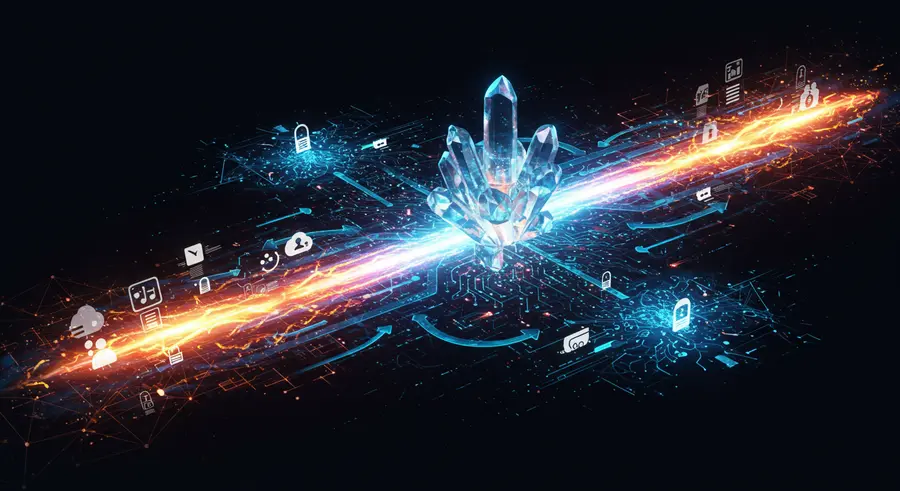The Oracle Problem: Why Smart Contracts Need External Data
Smart contracts are powerful, self-executing agreements that live on a blockchain. By their very design, blockchains are deterministic and isolated environments. This "isolation" is a feature, ensuring security and immutability. However, it also means that smart contracts cannot directly access information from the outside world – such as real-time market prices, election results, weather data, or the outcome of a sports game. This limitation is known as the "oracle problem."
Imagine a smart contract designed to release funds based on the price of a stock reaching a certain threshold. Without a way to reliably feed that stock price data into the blockchain, the smart contract cannot function as intended. This is where blockchain oracles come into play.
What are Blockchain Oracles?
Blockchain oracles are third-party services that connect smart contracts with external data. They act as data bridges, fetching information from the off-chain world (e.g., traditional web APIs, sensors, other blockchains) and securely feeding it onto the blockchain for smart contracts to use. Without oracles, the utility of smart contracts would be severely limited, confined only to data that originates and resides exclusively on the blockchain.

How Do Oracles Work?
The process generally involves several steps:
- Data Request: A smart contract on the blockchain needs external data to execute a condition. It sends a request to an oracle.
- Data Retrieval: The oracle, which could be a single entity or a decentralized network of nodes, queries external data sources (e.g., a financial data API for stock prices, a weather service for temperature).
- Data Validation (for decentralized oracles): In decentralized oracle networks, multiple independent oracle nodes retrieve the same data. Their responses are then aggregated and validated to ensure accuracy and prevent manipulation. This often involves mechanisms like staking, reputation systems, and cryptographic proofs.
- Data Delivery: The validated data is then sent back to the requesting smart contract on the blockchain. This data delivery usually involves a transaction on the blockchain, which incurs gas fees.
This mechanism allows smart contracts to react to real-world events, greatly expanding their potential applications beyond simple on-chain transactions.
Types of Blockchain Oracles
Oracles can be categorized based on their source, direction, and trust model:
- Software Oracles: These oracles get data from online sources like web servers, APIs, and databases. Examples include price feeds for DeFi applications, flight information for insurance contracts, or election results.
- Hardware Oracles: These collect data from the physical world through sensors, barcode scanners, or other IoT devices. For instance, an oracle could monitor temperature in a supply chain for perishable goods.
- Inbound Oracles: The most common type, these bring data from the off-chain world onto the blockchain.
- Outbound Oracles: Less common but equally important, these allow smart contracts to send commands or data to the off-chain world (e.g., unlocking a smart lock or triggering a payment in a traditional banking system).
- Centralized Oracles: Operated by a single entity. While simpler to implement, they introduce a single point of failure and trust, which goes against the decentralized ethos of blockchain.
- Decentralized Oracles: Composed of multiple independent oracle nodes that collectively retrieve, validate, and deliver data. This distributed approach enhances security, reliability, and censorship resistance by eliminating a single point of failure. Projects like Chainlink and Band Protocol are prominent examples of decentralized oracle networks. For robust and intelligent market insights, decentralized data feeds are critical.
Use Cases for Blockchain Oracles
Oracles unlock a vast array of possibilities for smart contracts:
- Decentralized Finance (DeFi): Price feeds for lending protocols, stablecoins, derivatives, and algorithmic trading platforms. Oracles provide the crucial real-time asset prices needed for liquidations, collateralization, and accurate settlement.
- Gaming (GameFi): Random number generation for in-game mechanics, verifiable outcomes for betting, and dynamic game environments based on external factors.
- Insurance: Automating payouts based on real-world events like flight delays, crop failures (weather data), or successful delivery of goods.
- Supply Chain Management: Tracking goods with IoT sensors, verifying product authenticity, and automating payments upon delivery or condition fulfillment.
- Real Estate: Automating property transfers based on external legal confirmations or market value changes.
- Prediction Markets: Verifying the outcome of events (e.g., elections, sports) to settle bets.
Challenges and Solutions
While indispensable, oracles face challenges:
- Data Integrity: Ensuring the accuracy and trustworthiness of the data fed by oracles. Malicious or incorrect data can lead to significant losses in smart contracts.
- Centralization Risk: If an oracle is centralized, it becomes a single point of failure, susceptible to attacks or manipulation.
- Timeliness: Data needs to be delivered promptly, especially for time-sensitive applications like DeFi.
Solutions often involve:
- Decentralized Oracle Networks (DONs): Using multiple independent nodes to retrieve and validate data, mitigating the risk of a single point of failure.
- Reputation Systems: Rewarding reliable oracle nodes and penalizing dishonest ones.
- Cryptographic Proofs: Techniques like Town Crier (TEE-based oracles) or zk-SNARKs to cryptographically prove the integrity of off-chain computations.
- Economic Incentives: Staking mechanisms where oracle nodes put up collateral, which can be slashed if they provide incorrect data.
The Future of Oracles
As Web 3.0 and dApps continue to evolve, the importance of robust and secure oracle solutions will only grow. Innovations in cross-chain interoperability, confidential computing, and more sophisticated data aggregation techniques will further enhance the capabilities and reliability of oracles, paving the way for increasingly complex and impactful decentralized applications. They are truly the hidden backbone connecting the blockchain world to the vast, dynamic real world.